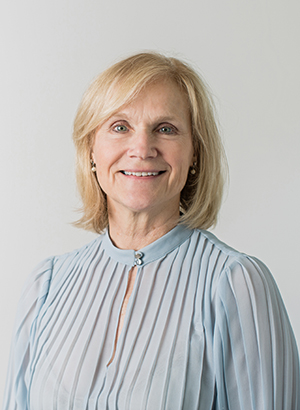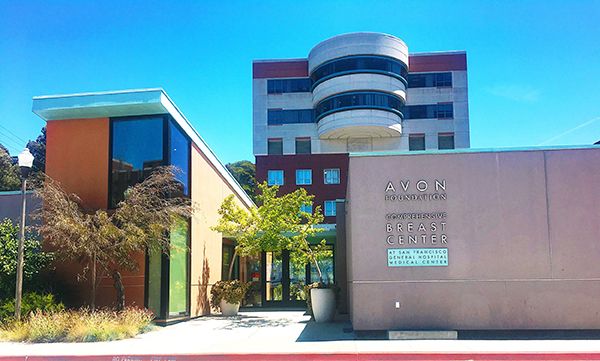The TMIST Breast Screening Trial, A Conversation with Rita Freimanis, MD
 2D and 3D digital mammography - which is better for breast cancer screening? The tomosynthesis mammographic imaging screening trial (TMIST), sponsored by the National Cancer Institute, aims to see which technology performs best in women who have no symptoms. The trial also aims to end the controversy of how often women should be screened - whether every year, or every 2 years, and from what age - 50 or earlier. Rita Freimanis, MD, professor in the UC San Francisco Department of Radiology and Biomedical Imaging, has been the site PI here since enrollment started in July 2019.
2D and 3D digital mammography - which is better for breast cancer screening? The tomosynthesis mammographic imaging screening trial (TMIST), sponsored by the National Cancer Institute, aims to see which technology performs best in women who have no symptoms. The trial also aims to end the controversy of how often women should be screened - whether every year, or every 2 years, and from what age - 50 or earlier. Rita Freimanis, MD, professor in the UC San Francisco Department of Radiology and Biomedical Imaging, has been the site PI here since enrollment started in July 2019.
“TMIST is aimed at breast cancer control and outcomes through analyzing how 2D compares with 3D mammography, and relating that to bio-markers,” says Dr. Freimanis. “We already know that 3D mammography finds more cancers sooner, but we do not yet know exactly what difference that makes. Are more lives saved and are different treatment options then possible? TMIST is looking very closely at exactly what sizes of which types of cancers are being found e.g., aggressive cancers versus more indolent ones.”
What makes TMIST unique is that no other screening study is randomized and controlled, uses modern imaging techniques with scrupulous attention to image quality, addresses uniformity among the contributing sites, looks at specific types of breast cancers, and includes biospecimens.
“TMIST compares these two types of mammograms currently in wide use clinically across the country. There is nothing experimental about the technology, just the study comparisons. Similarly, the every-year and every-two-years screening frequencies are both in common use across the country and depends to a large degree on the patients' doctors’ preferences and insurance plans,” says Dr. Freimanis. “Lastly, some insurance plans do not cover 3D mammography, stating it is ‘experimental,’ since such a definitive study has not been done. In this case, TMIST results might be used to make sure it is covered by insurance, especially when really helpful.”
At this time, the Avon Breast Imaging Center at Zuckerberg San Francisco General Hospital (ZSFG) is the only Northern California site, with over 100 institutions across the U.S. and some international sites participating. The enrollment period will continue until November 2023. Each participant gets their mammograms for a total of every five years, after which they are followed for another three years. This means each participant is on-study for at least eight years, with early results in 2027.

“ZSFG is one of the very few so-called ‘safety-net’ hospitals participating in the trial, which brings a unique set of challenges and benefits. All of the patients at ZSFG are either under- or un-insured. Some do not have homes or phones or internet access or regular doctors,” explains Dr. Freimanis. “The patients' experiences and level of education is variable, and therefore understanding the study and consent form is often challenging for potential participants. However, once consented, they often feel valued and proud to be helping future generations of women through their willingness to provide their data, which will help us understand how best to screen women with mammography and how often to do so.”
Last year, the Avon site was the top recruiting site for Latina women nationally. TMIST is committed to the inclusion of otherwise underrepresented minorities so the study results can be broadly applicable. The trial organizers would now like us to shift our focus to our Asian patient population, to boost those numbers, which are hovering between 1-2% nationally. Dr. Freimanis says the UCSF team will work on increasing Asian enrollment with community outreach efforts.
Both 2D and 3D digital mammography are used at the Avon Breast Imaging Center. 2D mammography takes one picture from the top-down view of the breast, and a second picture from the side of the breast for a total of two pictures. 3D mammography (also known as tomosynthesis) takes many pictures at slightly different angles for each of the two main views, and then the computer reconstructs them to give a 3D type set where you can page through the different levels of the breast. This allows the radiologist to see sharper detail without as much overlapping normal tissues. Both are FDA approved. 3D mammography involves extra radiation, a double dose, even though the double dose is very tiny and considered entirely safe.
According to Dr. Freimanis, the results of TMIST could help show situations where it would make a difference to use 3D mammography and would allow those resources to be targeted in those situations and lead to insurance coverage in those settings. Dr. Freimanis also feels there may be a continued role for 2D mammography in other situations.
